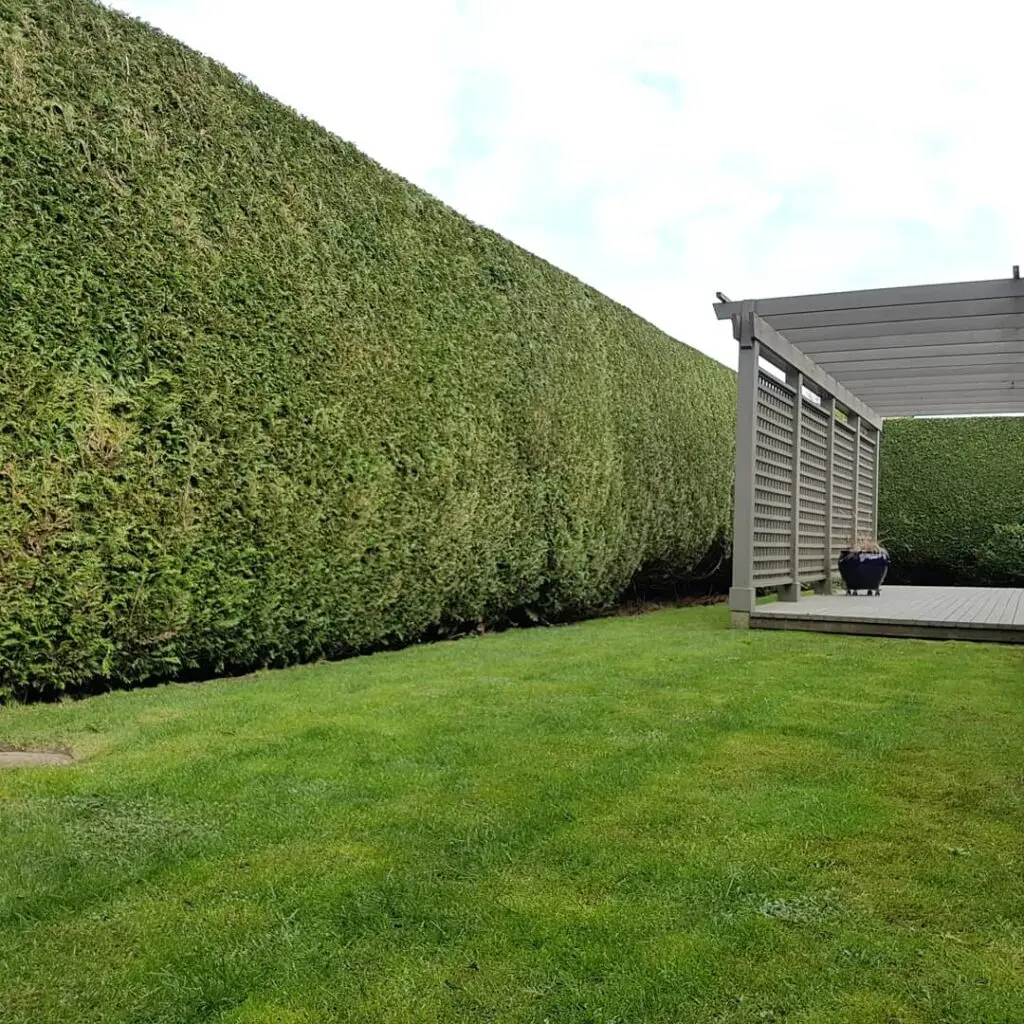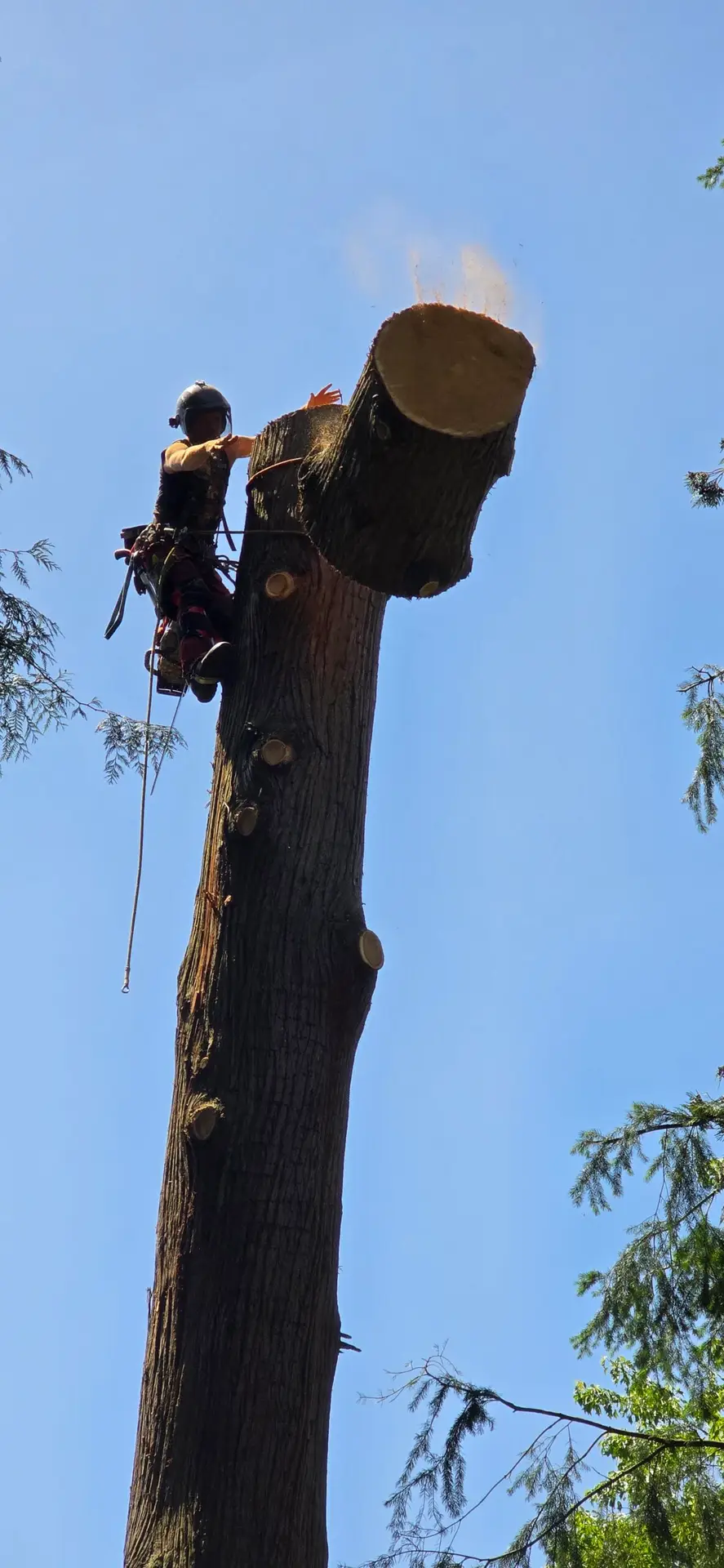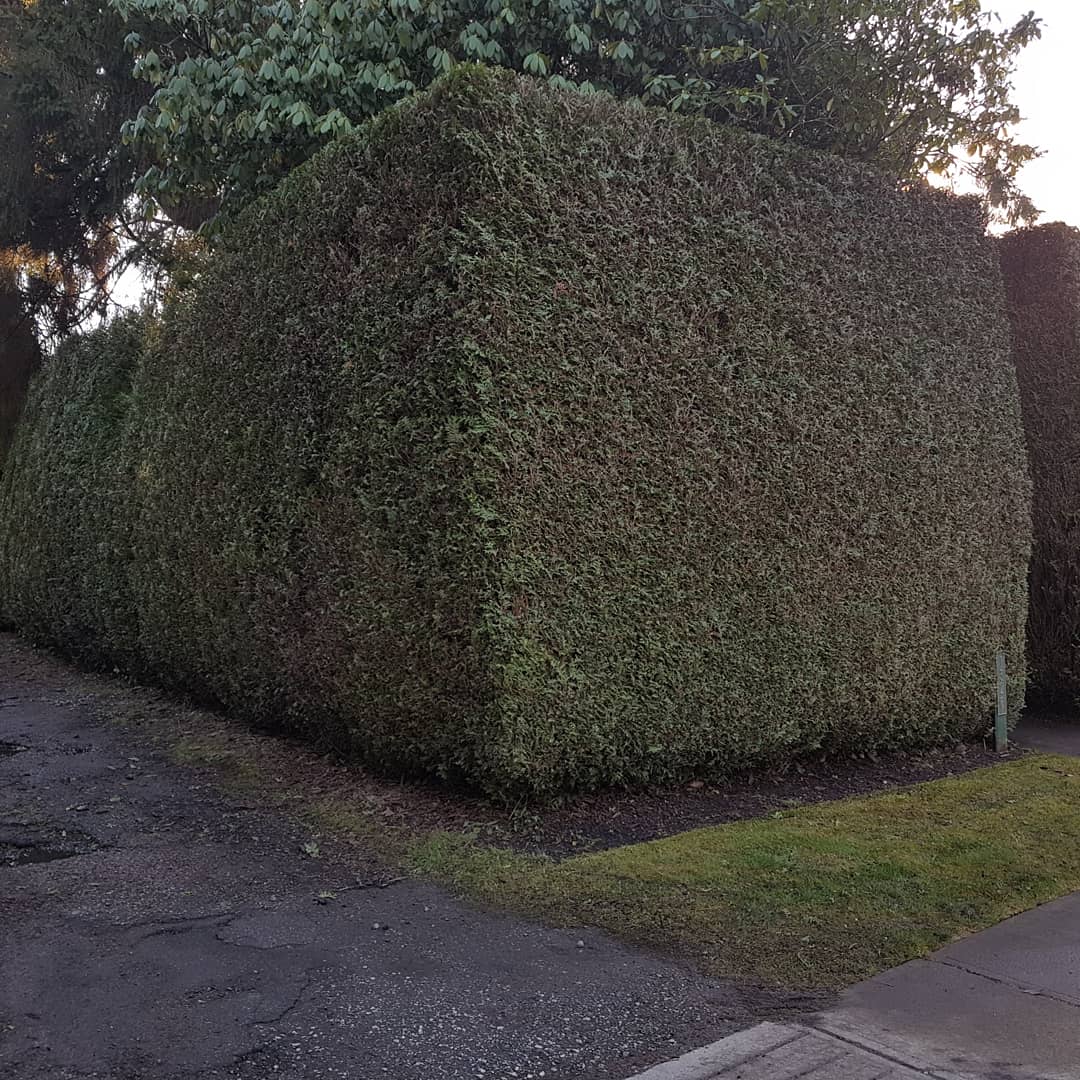Pinecrest always recommends consistent and proper maintenance for all hedge trimming projects. 🌿 When to Trim Your Hedge: Essential Timing Tips
Trimming your hedge at the right time is crucial for maintaining its health and appearance. Here’s a guide to help you determine the best timing:
✅ Ideal Times for Hedge Trimming
- Early Fall, Late Spring, or Winter: These seasons are optimal for pruning as hedges are typically dormant and not producing buds, reducing stress on the plant.
- Avoid Dry Weather: Pruning during dry conditions can lead to leaf burn. It’s best to prune on a cloudy day before the first frost.
- Be Cautious with Sap-Flowing Hedges: Hedges like maples produce heavy sap in early spring. Pruning before leaves fully develop can cause stress and make the plant more susceptible to diseases and pests.
✂️ Pruning Frequency Based on Hedge Type
- Fast-Growing Hedges: Species like Green Giant Arborvitae and laurels require frequent trimming—about twice a year—to maintain a compact size.
- Slow-Growing Hedges: Varieties such as Emerald Green Arborvitae need less frequent trimming, approximately once every 2 to 3 years.
- Light Pruning (Once per Year): Suitable for Yew, Emerald Green Arborvitae, Holly, and similar shrubs.
- Moderate Pruning (Once or Twice per Year): Ideal for American Arborvitae, Western Red Cedar, and others.
- Regular Pruning (More Than Twice a Year): Necessary for Prunus Laurocerasus, Flame Amur Maple, and Green Giant Arborvitae.
🌳 Hedge Trimming the right shrubs
Consider shrubs that:
- Remain green year-round
- Produce berries to attract birds
- Bloom in different seasons
- Are resistant to pests and diseases
Examples include Cypress, Camellia, Flowering Currant, Wild Privet, Weigela, Photinia, and Strawberry Tree.
🛠️ Promoting Healthy growth with Hedge Trimming Techniques
Use Appropriate Tools: For hedges over 5 meters (16 feet), a gas-powered or electric hedge trimmer is recommended. Shears are ideal for shorter hedges, and pruners are best for large branches.
Shape Properly: Trim the base wider than the top to ensure the entire plant receives adequate light. 🌟 Why Annual Trimming Matters
Consistent, annual trimming is vital for more than just neatness. It supports:
- Privacy: Dense, well-maintained hedges form effective natural screens, shielding your yard from neighbors or the street.
- Plant Health: Removing dead, diseased, or overgrown branches improves airflow and sunlight exposure, reducing the risk of pests and fungal infections.
- Aesthetics: Regular pruning encourages even growth, clean lines, and vibrant foliage—keeping your landscape looking polished and inviting year-round.
Neglecting to trim can lead to overgrowth, uneven shape, and weakened plants. With a little routine care, your hedge can thrive for years to come.
🌟 Why Annual Hedge Trimming Matters
Consistent, annual trimming is vital for more than just neatness. It supports:
- Privacy: Dense, well-maintained hedges form effective natural screens, shielding your yard from neighbors or the street.
- Plant Health: Removing dead, diseased, or overgrown branches improves airflow and sunlight exposure, reducing the risk of pests and fungal infections.
- Aesthetics: Regular pruning encourages even growth, clean lines, and vibrant foliage—keeping your landscape looking polished and inviting year-round.
Neglecting to trim or water properly can lead to overgrowth, disease, or plant decline. With a little routine care, your hedge will thrive and remain a valuable feature of your landscape.
💧 Watering Techniques to Keep Hedges Healthy
Proper watering plays a key role in the health and longevity of your hedge and the success of hedge trimming:
- Water Deeply, Not Frequently: Encourage deep root growth by watering thoroughly 1–2 times per week instead of shallow daily watering.
- Morning is Best: Water early in the day to allow foliage to dry before nightfall, which helps prevent fungal diseases.
- Use Mulch: A 2–3 inch layer of mulch around the base helps retain moisture and keeps roots cool.
- Adjust for Weather: During hot, dry spells, increase watering frequency. In cooler or rainy seasons, reduce accordingly.
- Avoid Overwatering: Soggy soil can lead to root rot. Make sure the soil drains well and monitor moisture levels regularly.

At Pinecrest, we specialize in professional hedge trimming and comprehensive landscape care to keep your outdoor spaces looking their best all year long. Whether you need seasonal maintenance, shaping for privacy, or help choosing the right plants for your property, our experienced team is here to help.
Contact Us to schedule your hedge trimming service and let us bring out the full potential of your landscape.



